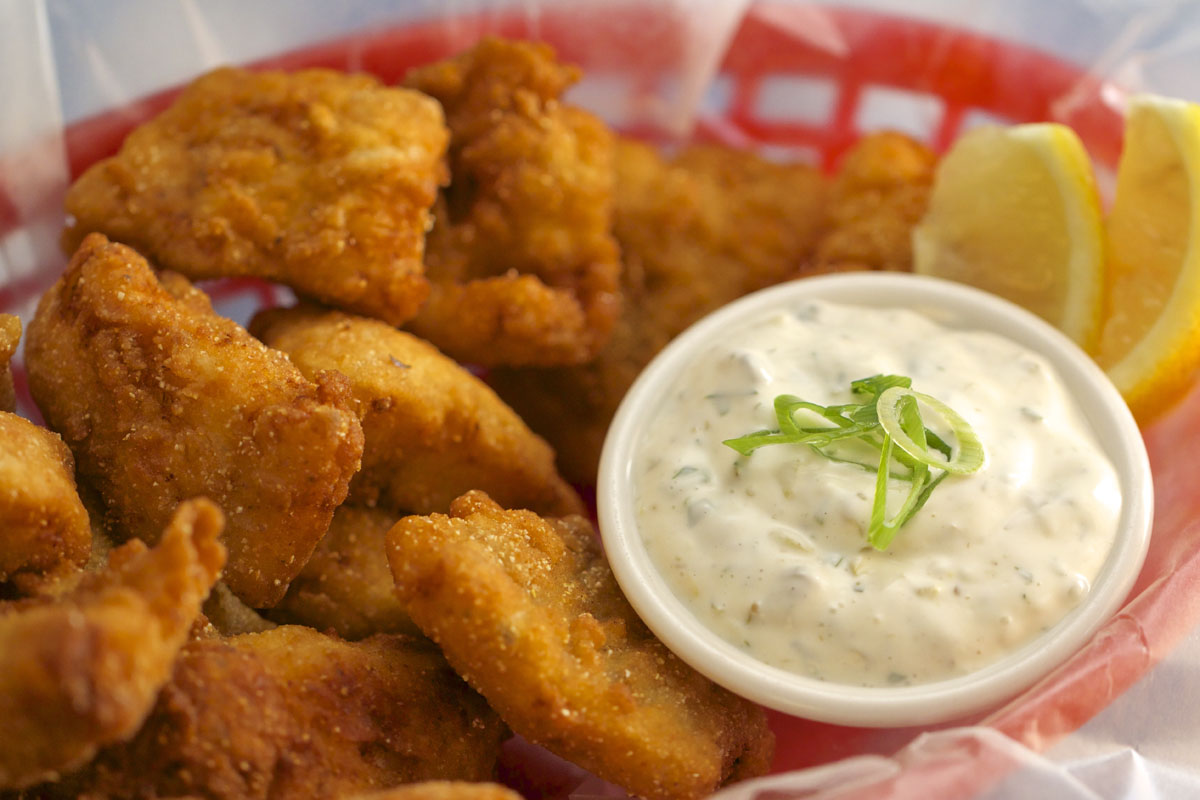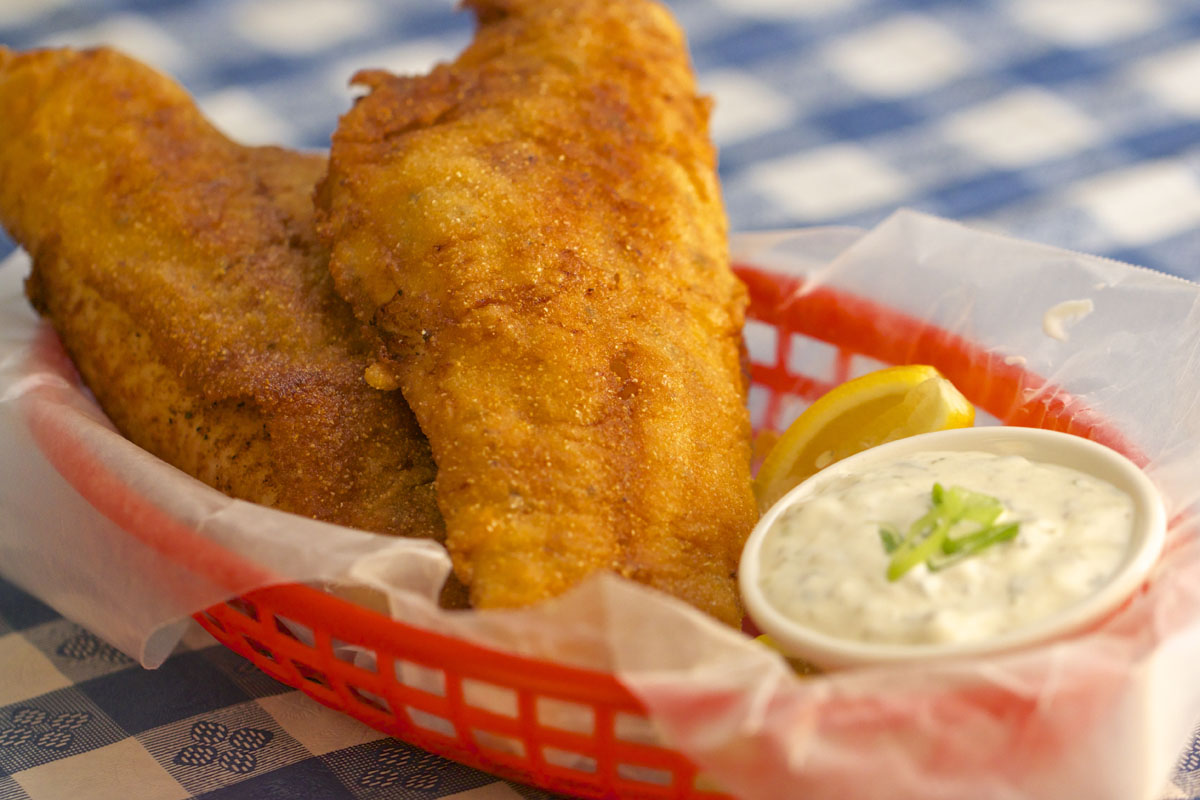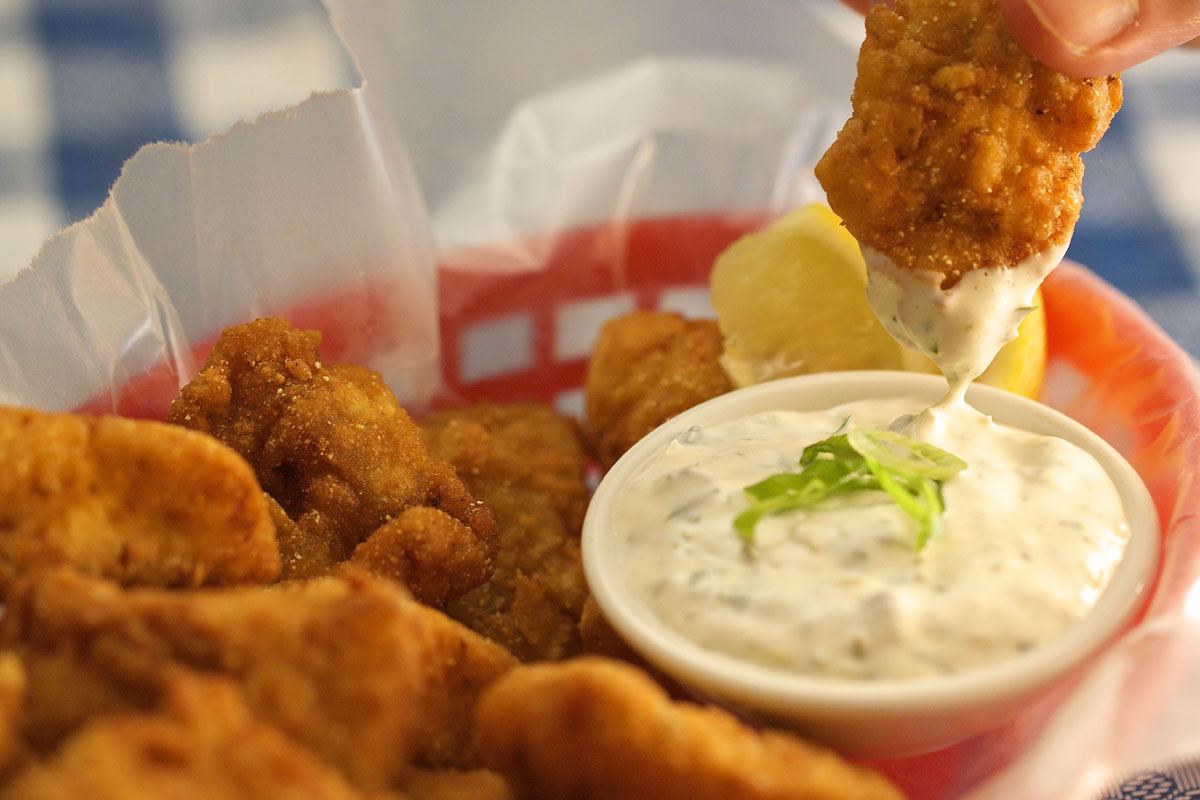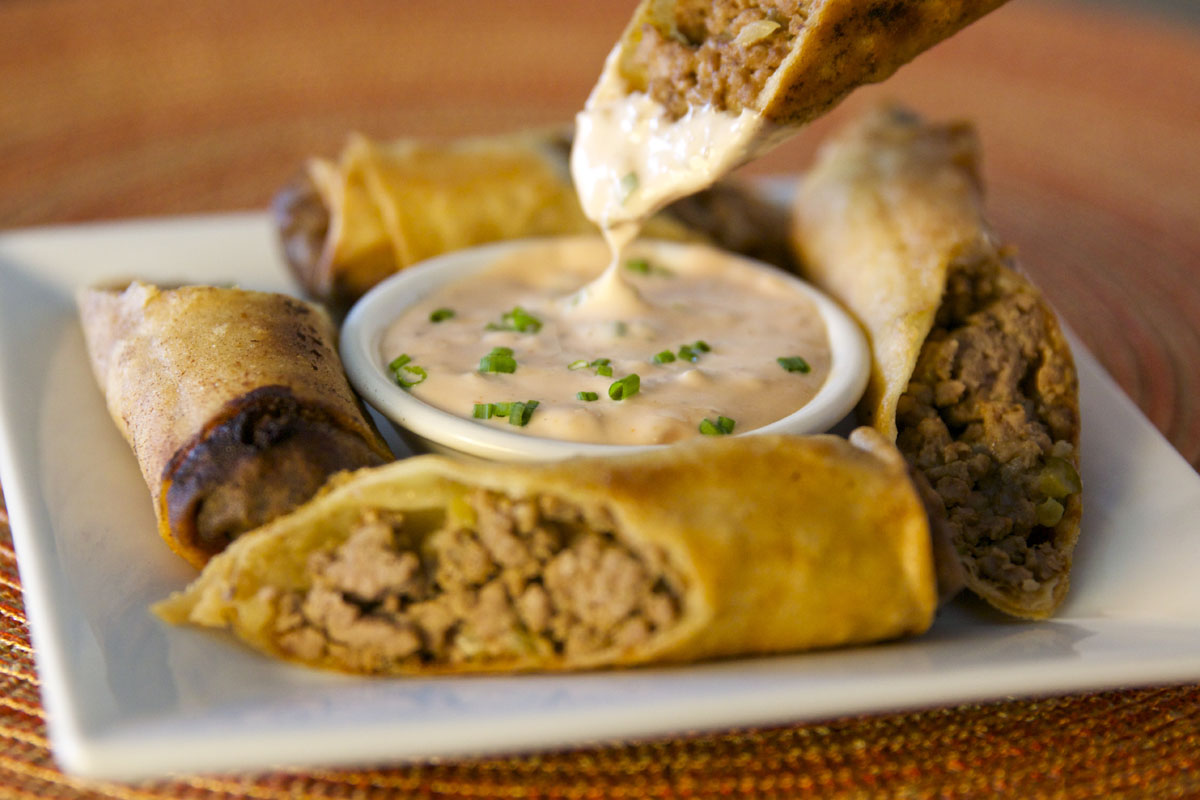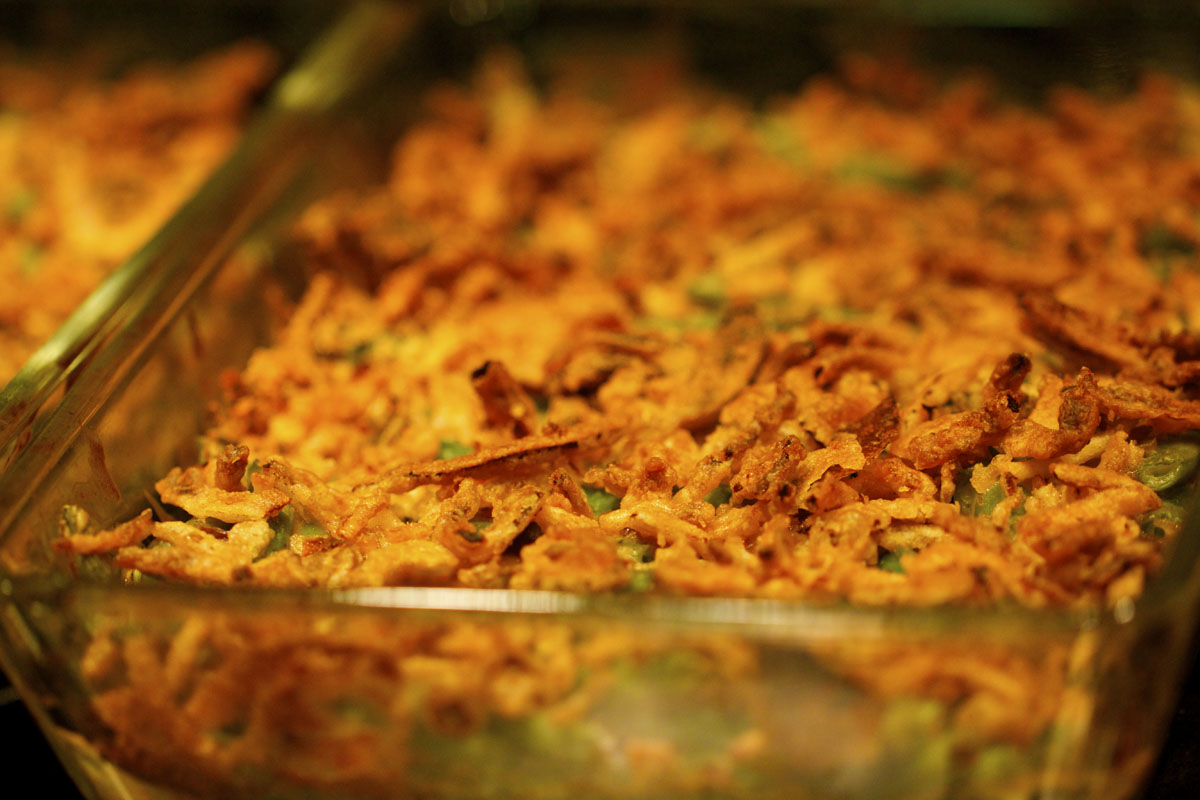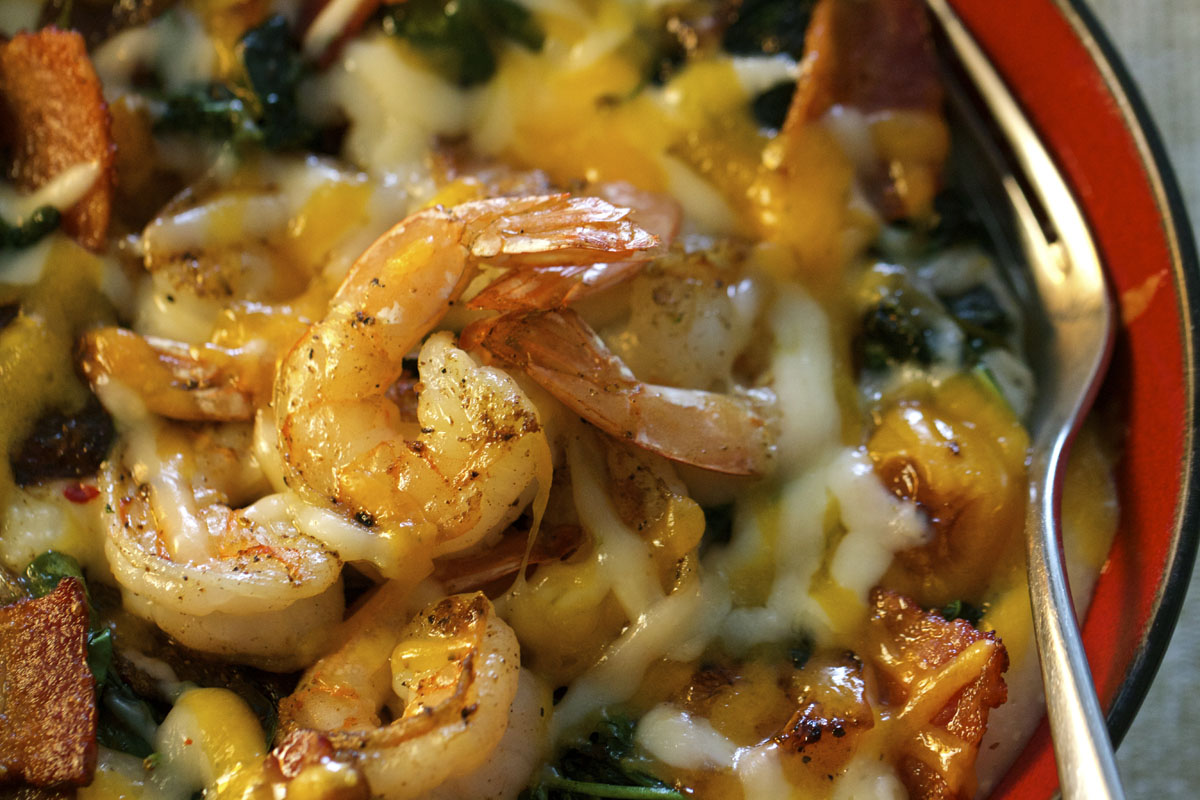Fried Catfish with Homemade Tartar Sauce
Servings
4 – 6
Active Time
30 mins
Total Time
45 mins
| Share on Facebook |
| Share on Twitter |
| Download the Recipe |
Fried Catfish with Homemade Tartar Sauce
For a Saturday night in the summer, there isn’t much more appealing to me than a plateful of freshly fried catfish with some homemade tartar sauce and lemon wedges. Turn on some dancing music, heat up the fryer, ice down some tasty beers and fry up some catfish and you, my friends, are well on your way to one helluva Saturday night!
Ingredients
For the Fried Catfish
- 4 – 6 catfish fillets (~ 1/2 lb. each)
- 2 teaspoons cajun seasoning
- 1 teaspoons garlic powder
- 1 teaspoon paprika
- 3/4 cup low-fat buttermilk
- 1 cup fine cornmeal
- 1 cup all-purpose flour
- Peanut, canola or vegetable oil for frying
- 1 cup mayonnaise
- 1 green onion
- 1 large dill pickle, or 2 tablespoons relish
- 1 tablespoon capers
- 1 tablespoon fresh parsley
- 1 teaspoon lemon zest
- The juice of half of a lemon
For the Tartar Sauce
Directions
1. We will start by making the tartar sauce to go with the fried catfish. Although the sauce does not take long to make, you’re going to want it ready to dunk the fried catfish in as soon as they come out of the fryer. Plus, the flavors will have a chance to develop and come together while you are breading and frying the fish. Place a small mixing bowl next to your cutting board and start by zesting a lemon. Gather the zest into a small pile on the cutting board and run your knife through it a couple of times to break down any long pieces. Measure out a teaspoons of the zest and add it to the mixing bowl. Cut the lemon in half and squeeze the juice of one of the halves into the bowl, ensuring that the seeds do not go in as well. The other half can be cut into wedges and served alongside the fried catfish. Twist off a small handful of parsley leaves from the bunch, mince them and then toss them into the bowl. Next, trim the ends off of a green onion and cut it into thin slices, including the dark green portion. Add to the bowl. Break the pickle down into a smaller, more manageable chunks and then mince it until it reaches a “relish-esque” consistency. On the other hand, you could just use two tablespoons of prepared relish if you would prefer, but I find that store-bought relishes are usually too sweet and taste more artificial than delicious. Using a pickle instead will also allow you adapt the recipe to suit your specific taste, but you’re the cook, so do-whatcha-gotta-do. Next up, measure out a tablespoon of drained capers and mince them as well. Scoop the minced pickles and capers into the mixing bowl and add the cup of mayonnaise. Add salt and pepper to suit your taste and stir until thoroughly combined. Transfer to a tupperware and let sit in the refrigerator until you’re ready to eat.
2. It is now time to make the fried catfish. Pour approximately a quart of oil (32 fluid ounces) into five-quart Dutch oven. Bring the oil temperature up to 350 degrees over high heat. I would recommend using a deep fry thermometer if you have one, but it’s not absolutely essential. Whatever you do, make the decision to use one or not before heating the oil – trying to clamp the thermometer onto a scalding pot full of hot oil is decidedly not recommended.
3. While the oil is warming up, it’s time to put together your breading station for the fried catfish. In a small bowl, mix together the Cajun seasoning, paprika, garlic power and some salt and pepper. In a shallow dish, pour in the buttermilk. In a second shallow dish, combine the flour, cornmeal and a pinch or two of salt and mix together with a fork or whisk. Lastly, setup a cooling rack set over a baking sheet at the end of your station.
4. We will now bread the catfish by passing through each dish in order. Start by sprinkling the spice mixture over both sides of a catfish fillet. Next dunk the fish in the buttermilk to coat both sides and let drain for a moment or two over the dish to allow the excess to drip off. Next dredge the fillet in the flour/cornmeal mixture and shake off any excess before placing onto the cooling rack. Repeat the process until each fillet is breaded. Allow the breaded fillets to sit on the cooling rack for approximately five minutes before frying. Adding this resting period in the process will allow the breading to fuse to the fish better and create a more appealing crust when fried that won’t flake off.
5. Now that the fish is breaded and seasoned and the oil is up to 350 degrees, it’s time to fry the fillets. You will want to fry them in batches of two fillets at a time. Carefully lower the fish into the oil and when it’s about halfway into the oil, allow the end you are holding to fall away from you to protect yourself from a splatter of hot oil. An even safer method would be to place a fillet onto a spider and use it to gently lower the fish into the oil. Allow the fillets to fry until golden brown, which will take approximately five or six minutes. Use a spider or slotted spoon (just don’t use tongs, they’ll break the fillets) to remove the fried catfish from the oil and set onto a cooling rack or paper towel lined plate. Fry the remaining fillets and serve them immediately with the tartar sauce and lemon wedges.

